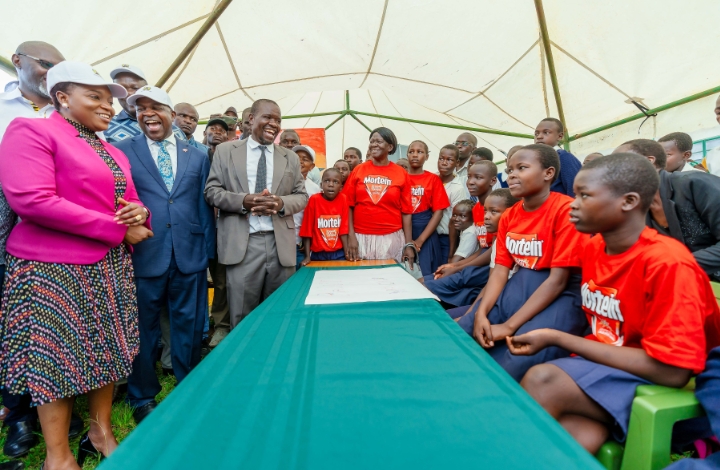Mortein Doom Teams Up With Ministry of Health to Educate Kisumu Residents on Malaria Prevention

As the world celebrated World Malaria Day, Mortein Doom, a leading brand in mosquito eradication, partnered with the Ministry of Health (MOH) to educate residents of Kisumu County on effective methods for preventing malaria.
In Kisumu County, this year’s World Malaria Day, themed: Accelerating the fight against malaria for a more equitable world, was observed at Senye School at Awasi, where mothers and vulnerable women were provided with Mortein Doom products to shield themselves from malaria-carrying mosquitoes.
Malaria ranks among the top causes of death, accounting for 16.8 percent of deaths in children aged between 5-14 years in Africa. In Kenya, nearly 70 percent of the country’s close to 50 million people are at grave risk, with 10,000 people succumbing to malaria annually, according to the World Health Organization (WHO).
“At Reckitt, we are committed to complementing efforts to end malaria in Kenya and ensure that communities lead healthy lives. Malaria is preventable and curable because even a single mosquito can cause malaria. However, we can protect ourselves by using our insecticide Mortein Doom that eliminate 100 percent of mosquitoes.”
“In areas like Kisumu and other parts of the Lake Victoria region, mosquito bites pose more than a nuisance – they are life-threatening,” said Mr Asif Hashimi, Country Manager of Reckitt Kenya.
Kisumu County ranks among the regions with the highest prevalence of malaria in Kenya. According to the World Health Organization (WHO), malaria prevalence in the Lake Victoria region, which includes Kisumu County, stands at around 27%, while coastal areas near the Indian Ocean report a prevalence of 8%.
The heavy rains causing flooding across various parts of Kenya could exacerbate the situation by leading to a surge in malaria cases, potentially stretching hospitals and healthcare resources.
Malaria is transmitted from one person to another through mosquito bites and remains life-threatening in several parts of Kenya, despite significant strides in treatment and prevention. Pregnant women and children under the age of 5 are particularly vulnerable.
Many Kenyans living in low malaria transmission areas, such as Nairobi, can also be at risk of infection when they travel to high-transmission areas, such as to visit relatives.
The Kenya Economic Survey 2023 report by the Kenya National Bureau of Statistics (KNBS) indicates that malaria topped the list of causes of death among children and teenagers in 2022, followed by pneumonia and anemia.
According to the report, in 2022, various health facilities in Kenya reported 10 million cases of malaria, which accounted for 11.7 percent of the total disease caseload.
In addition to using effective insect repellents to ward off mosquitoes at dusk or dawn, other preventive measures include wearing loose, light-colored clothing that covers your arms and legs, and sleeping under mosquito nets.





